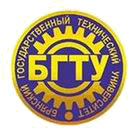Bryansk, Bryansk, Russian Federation
Bryansk, Bryansk, Russian Federation
employee
Moscow, Moscow, Russian Federation
The analysis of the design features of the bogie of the TEM23 shunting diesel locomotive is carried out. In the process of analysis, the directions of its improvement are determined. It is proposed to rotate the bogie frame in the vertical plane by reducing the body supports to two and using a pivot with low lowering, equip the bogies with pneumatic spring suspension in the form of two corrugations installed in series with shortened suspension springs. The proposed options for improving the undercarriage of a diesel locomotive will increase the competitiveness of products and reduce costs
contact mechanics of engineering surfaces, friction and wear of interfaces, tribotechnical materials science, mechanics and control processes, kinematics, dynamics, strength and reliability of machines and structural elements
1. Railway technical handbook, SKF Group (2012).
2. J. Gerlici, K. Kravchenko, M. Gorbunov and T. Lack, “Increasing the Traction Properties of Locomotives for the Account of Improvement of Body and Bogies Connexions,” International Journal of Engineering & Technology 7, 377-382 (2018).
3. G.K. Zaitsev, “Device, operation and repair of locomotives of the 2TE25A (2TE25K) series,” textbook, JSC Russian Railways, 2014.
4. L. Mazzola and M. Berg, “Secondary suspension of railway vehicles,” Air spring modelling: Performance and critical issues. Proceedings of the Institution of Mechanical Engineers Part F Journal of Rail and Rapid Transit 228(3), 225-241 (2012)
5. Masliiev, Y. Makarenko and V. Masliiev, “Study of an air spring with improved damping of vibrations,” Econtechmod an international quarterly journal 4, 59-64 (2015).
6. Alonso, G. Ortiz, J. Nieto and J. Vinolas, “Air suspension characterisation and effectiveness of a variable area orifice,” Vehicle System Dynamics 48, 271-286 (2010).
7. V.N. Ivanova, “Design and dynamics of diesel locomotives,” (Moscow, Transport, 1974), 336 p.
8. D.Ya. Antipin, D.A. Bondarenko and O.V. Izmerov, “Study of dynamic loads in traction drive of freight locomotive under the influence of railway track irregularities,” Procedia Engineering, 1583-1586 (2017).
9. S. Myamlin, M. Luchanin and L. Neduzha, “Construction analysis of mechanical parts of locomotives,” TEKA, Commission of motorization and energetics in agriculture 13, 162-169 (2013).
10. P. Ghate, S.R. Shankapal and M.H. Gowda, “Failure Investigation of a Freight Locomotive Suspension Spring and Redesign of the spring for Durability and ride index,” SASTECH Journal 11, 23-29 (2012).
11. M. Spiryagin, C. Cole, Y. Sun, T. McSweeney, V. Spiryagin, N. Gorbunovand and A. Golubenko, “Optimisation of primary suspension characteristics for heavy haul locomotives,” WCRR, 1-5 (2013).
12. N. Gorbunov, “Theory and practical realization of the system approach in the construction of the carriage of locomotive,” D.Sc. thesis, East Ukrainian National University, 2006.
13. S. Iwnicki, Handbook of railway vehicle dynamics (Boca Raton: CRC Press, 2006), p 548.
14. V.A. Tatarіnova, J. Kalіvoda and L. Neduzha, “Research of locomotive mechanics behavior,” Science and Transport Progress 5, 56-65 (2018).
15. Railelectrica: “Selection of suspension arrangement of traction motors” (www.railelectrica.com/traction-motor/selection-of-suspension-arrangement-of-traction-motors-a-right-approach-2),
16. L. Liudvinavičius and V. Jastremskas “Modernization of Diesel-electric Locomotive 2M62 and TEP-70 Locomotives with Respect to Electrical Subsystem,” Procedia Engineering 187, 272-280 (2017).
17. S. Simson, “Three axle locomotive bogie steering, simulation of powered curving performance. Passive and active steering bogies,” Ph.D. thesis, Central Queensland University, 2009.
18. S. Simson and C. Cole, “Idealised steering for hauling locomotives,” Int J Rail and Rapid Transit, Part F, Proc. Inst Mech Engrs 221, 227-236, (2007).
19. S. Simson and C. Cole, “Simulation of traction and curving for passive steering hauling locomotives,” Int J Rail and Rapid Transit, Part F, Proc. Inst Mech Engrs 222, 117-127 (2008).
20. Y. Yuan, Z. Hong-Jun and L. Shi-Hui, “The mechanism of drive system flexible suspension and its application in locomotives,” Transport 30(1), 69-79 (2015).
21. A.G. Suslov and M.G. Shalygin, “The interrelation of the surface subroughness of martensitic steels with their granularity the quality of mechanical processing,” Mechanics, resource and diagnostics of materials and structures (MRDMS-2016) Proceedings of the 10th International Conference on Mechanics, Resource and Diagnostics of Materials and Structures, 040085:1-040085: (2016).
22. O.A. Gorlenko, M.G. Shalygin and G.N. Makarov, “Eliminating Liquid Entrapment between the Teeth of a Gear-Driven Pump,” Russian Engineering Research 38, 499-502 (2018)
23. D.Ya. Antipin, V.I. Vorobiev, O.V. Izmerov, S.O. Kopylov, M.A. Maslov and S.G. Shorokhov “The suspension unit of the traction motor,” Patent for utility model No. 176843, Russian Federation, MPK V61S 9/38. / Publ. 01.30.2018, bul. No. 41.
24. Fedonin O.N., Shalygin M.G. Povyshenie korrozionnoy stoykosti i iznosostoykosti izdeliy transportnogo i himicheskogo mashinostroeniya // Naukoemkie tehnologii v mashinostroenii. 2020. № 8. S. 3-10.
25. Shalygin M.G. Parametry subsherohovatosti poverhnosti pri razlichnyh tehnologiyah obrabotki i ih vliyanie na iznos // Trenie i iznos. 2019. T. 40. № 3. S. 272-277.
26. Shalygin M.G. Deformacionno-adgezionnoe iznashivanie subsherohovatosti poverhnostey treniya austenitnyh staley // Problemy mashinostroeniya i avtomatizacii. 2017. №2. S. 98-101.






